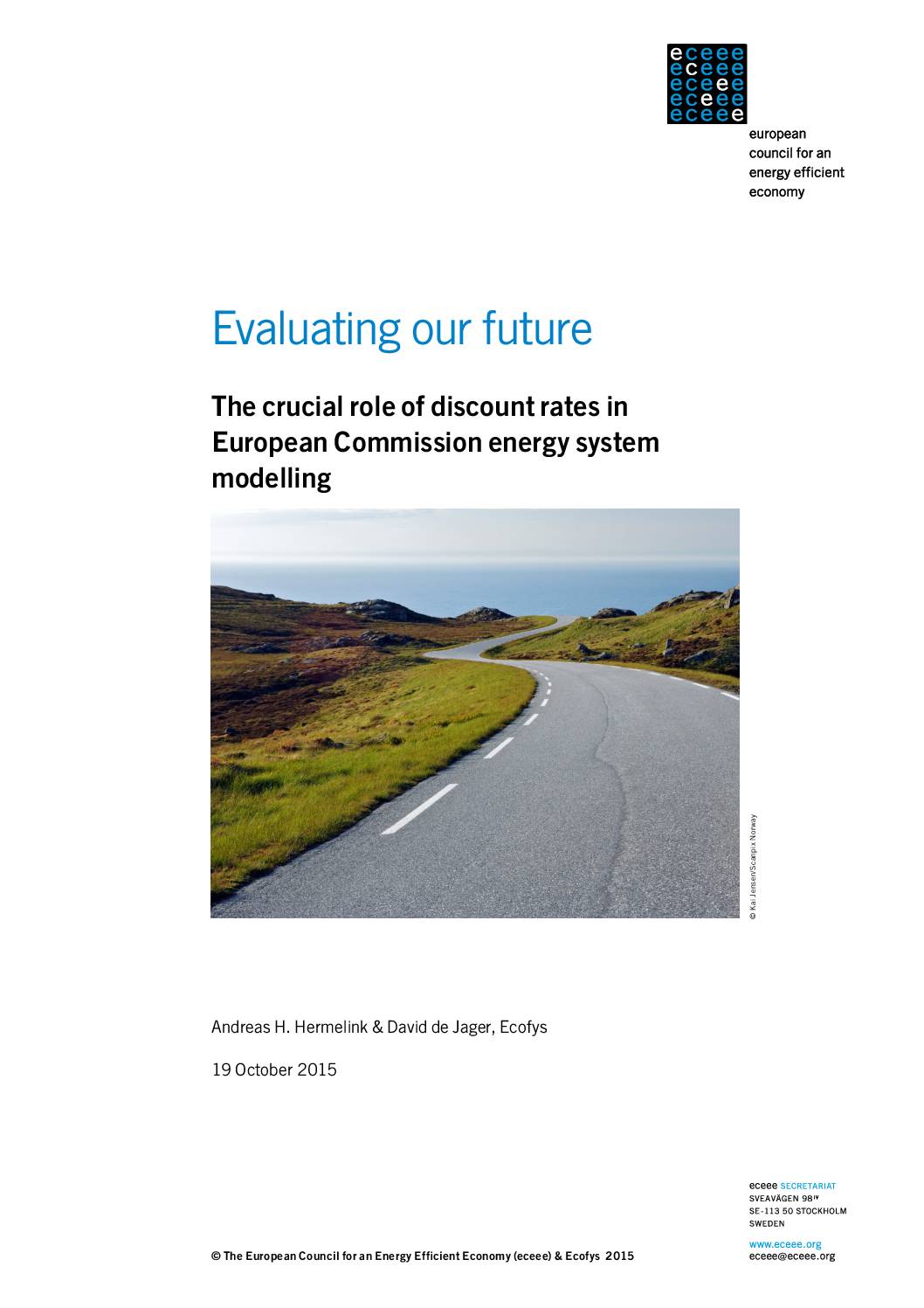Discount rates are a crucial factor in energy and climate modelling and associated impact assessments. Why is that? Energy efficiency measures (e.g. in buildings) typically have relatively high upfront costs, which need to be recovered by savings over longer periods. Discount rates are thus used to attribute a value to future cash flows. The higher the discount rate, the lower the value we assign to future savings in today’s decisions. Consequently, high discount rates make energy efficiency measures and supporting policies look less attractive.
The new eceee report is entitled Evaluating Our Future and prepared by international energy and climate consultancy Ecofys for eceee. The report follows on the Commission’s 2014 proposal and accompanying impact assessment for a 2030 greenhouse gas reduction and energy efficiency target.
One main concern with Commission modelling practice is the apparent mix of private and societal discount rates. The authors point at the lack of transparency as to why the same high discount rates for modelling private investment behaviour of individuals and companies are applied to the evaluation of societal costs and benefits of policies.
The report also reveals that the Commission in its impact assessments applies many times higher societal discount rates than individual Member States are doing in their own policy evaluation work.
According to the report, neither economic theory nor actual Member State practice provide good reasons for the major differences between discount rates observed to be used in EU Impact Assessments and individual Members State impact assessments. In fact, some Member States explicitly follow the clear advice from earlier EU Impact Assessment Guidelines to use a discount rate of 4%.
Share this

Sectors: Buildings, Cross cutting, Renewables
Country / Region: Europe
Tags: assessments, building types, climate models, corporate reporting, discount rate, economic cost, energy, energy efficiency, global climate, impact assessments, impacts on systems and sectorsKnowledge Object: Publication / Report
Published by: eceee, Ecofys
Publishing year: 2015
Author: Andreas H. Hermelink, David de Jager
